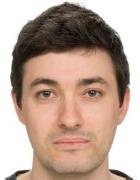Dr. rer. nat. Florian Schaff

- Telefon
- +49 89 289-10802
+49 89 289-12844 - Raum
- –
- florian.schaff@tum.de
- Links
-
Visitenkarte in TUMonline
- Arbeitsgruppe
- Biomedizinische Physik
Lehrveranstaltungen und Termine
| Titel und Modulzuordnung | |||
|---|---|---|---|
| Art | SWS | Dozent(en) | Termine |
|
Biomedical Physics 1
eLearning-Kurs Zuordnung zu Modulen: |
|||
| VO | 2 |
Pfeiffer, F.
Mitwirkende: Schaff, F. |
Do, 12:00–14:00, online |
|
Biomedical Physics 2
eLearning-Kurs Zuordnung zu Modulen: |
|||
| VO | 2 |
Pfeiffer, F.
Wilkens, J.
Mitwirkende: Schaff, F. |
Do, 14:00–16:00, online |
|
Biomedical Physics
eLearning-Kurs Zuordnung zu Modulen: |
|||
| PS | 2 |
Pfeiffer, F.
Mitwirkende: Schaff, F. |
einzelne oder verschobene Termine |
|
Exercise to Biomedical Physics 1
Zuordnung zu Modulen: |
|||
| UE | 2 |
Schaff, F.
Leitung/Koordination: Pfeiffer, F. |
Do, 12:00–14:00, PH HS2 |
|
Exercise to Biomedical Physics 2
Zuordnung zu Modulen: |
|||
| UE | 2 |
Schaff, F.
Wilkens, J.
Leitung/Koordination: Pfeiffer, F. |
Do, 14:00–16:00, PH HS2 |